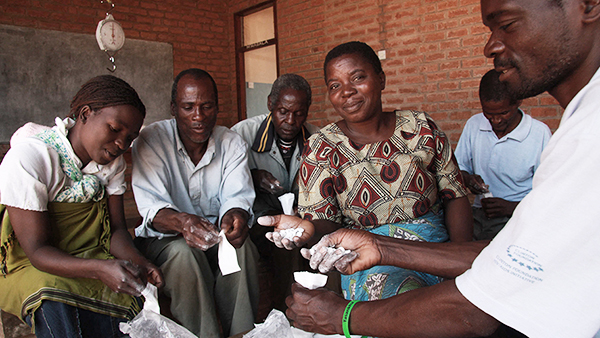Unfortunately, antibiotic resistance cannot be fixed by easy technical interventions and the issue must be addressed on all levels of society. Below, we describe some of the areas that need to be covered. Most of these elements are also included as part of the strategic objectives of the Global Action Plan on Antimicrobial Resistance.
Reduce inappropriate use
All use, whether appropriate or not, can promote the emergence of resistance in bacteria. Unfortunately, inappropriate and excessive use of antibiotics is common in both high- and low-income countries. While legal regulation of antibiotic sales has worked in certain parts of the world, in other places such restrictions are difficult to implement in practice. That being said, enforcing regulation of inappropriate use could have a direct impact on preserving the effectiveness of these life-saving medicines.
Ensure access and strengthened regulatory systems

Reducing overuse of antibiotics is key, but equally important is ensuring access to these essential medicines for those in need. Limited access to effective treatment in many low- and middle-income countries compromises health and results in increased health care and societal costs. Efforts to scale-up access to antibiotics need to be orchestrated in parallel with making sure they are used appropriately. This also includes strengthening regulatory systems to ensure a stable and sustainable supply chain as well as quality assurance of medicines.
Improve infection prevention and control
Infection prevention, such as improved hygiene, is the first line of defense against disease and in turn against the use of antibiotics.

Investments in water, sanitation and hygiene have not been sufficient and will be necessary to provide quality of care and limit antibiotic resistance.
It is estimated that 494 million cases of diarrhea are treated with antibiotics each year in Brazil, Indonesia, India and Nigeria alone. Universal access to improved water and sanitation in these four countries could reduce use by 60%.
The same is true in the agricultural sector – healthy animals do not need antibiotics.
Address non-human use and environmental concerns

Considerations beyond health and healthcare need to include phasing-out and banning of non-therapeutic antimicrobials used in food animal production. Similarly, more stringent regulations need to be put in power to avoid irresponsible manufacturing practices. An effluent from such processes contains enormous antibiotic residues which contaminates surrounding environments and fuels antibiotic resistance.
Investments in coordination
The global spread of antibiotic resistance requires coordination of efforts across national boundaries, through collaboration within and between governments, civil society organizations and international agencies. However, so far such cooperation is often only in its early stages.
Increase professional and public awareness
Improved awareness and understanding among the general public, health professionals, educators, civil society organizations and governments is essential when addressing the antibiotic resistance problem. This will inevitably require the involvement of civil society actors, who can mobilize support and disseminate information and materials more widely in local communities.
Stimulation of research and development of novel antibiotics, diagnostics and vaccines

The scientific and structural difficulties in discovering new antibiotics have only begun to be appreciated in recent years, while discussions on how to overcome financial bottlenecks have gathered much attention. To overcome these scientific barriers, the public sector needs to get involved to get the highest priority antibiotics, diagnostics and vaccines developed. We need a new alternative to the traditional patent-based business model, where the return on investment does not depend on high volume sales or high prices of novel antibiotics. Importantly, we need to have strategies in place to minimize unnecessary use to keep it effective for as long as possible and ensure it is affordable for those in need from the onset of the development process.
A strong political response and financial commitments
Even though many essential components of control of antibiotic resistance have long been known, success in changing policies and effectively responding to the problem has been limited. The political response and will to take action has for long been too weak and fragmented. One major reason is the complexity of the problem – it needs to be addressed on all levels of society, across national boundaries, in varied health systems and involve many different organizations and actors.
As the devastating consequences of antibiotic resistance have become increasingly evident, the issue has moved up on the political agenda. However, strong political will and leadership will be needed to reach sustainable solutions and coordinate between local, national, regional and global efforts. We all need to take action now.
